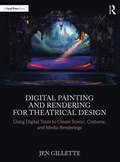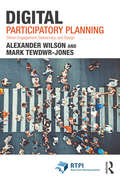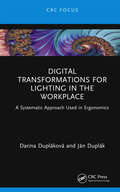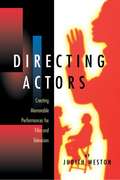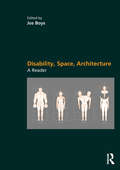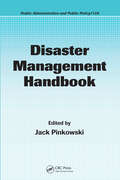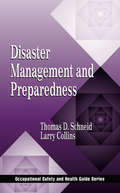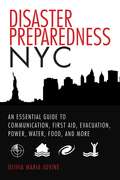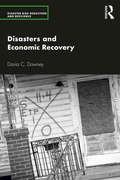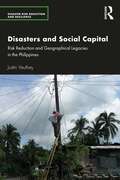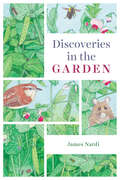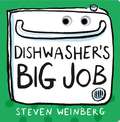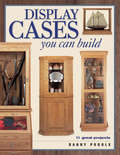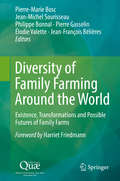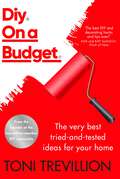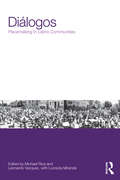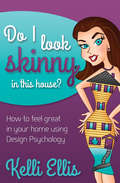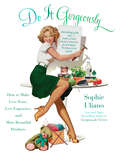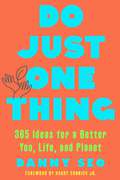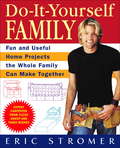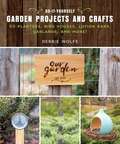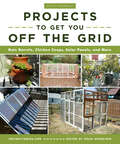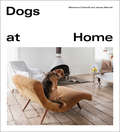- Table View
- List View
Digital Painting and Rendering for Theatrical Design: Using Digital Tools to Create Scenic, Costume, and Media Renderings
by Jen GilletteDigital Painting and Rendering for Theatrical Design explores the tools and techniques for creating dazzling, atmospheric, and evocative digitally painted renderings for scenic, costume, and projection/integrated media design. By focusing on technique rather than the structure of a particular software, this book trains theatrical designers to think and paint digitally, regardless of the software or hardware they choose. The text begins with the construction of the artist’s physical and digital workspace, then delves into an explanation of tool functionality, technique-building exercises, and examples from professional theatrical designers to help contextualize the concepts presented. Each chapter gradually progresses in complexity through skill-building exercises and advanced tool functionality, covering concepts like brush construction, various forms of masking, and layer interaction. The book explores various methods of constructing a digital rendering, including producing digital paintings that look like traditional media and photo bashing – the practice of using extant photographs to create a collaged image. Concepts are contextualized throughout the text using illustrations, quotes, and interviews with working professional designers. This beautifully illustrated guide is written for professional theatrical artists, students of theatrical design, and other visual artists looking to broaden their digital painting skillset.
Digital Participatory Planning: Citizen Engagement, Democracy, and Design (RTPI Library Series)
by Mark Tewdwr-Jones Alexander WilsonDigital Participatory Planning outlines developments in the field of digital planning and designs and trials a range of technologies, from the use of apps and digital gaming through to social media, to examine how accessible and effective these new methods are. It critically discusses urban planning, democracy, and computing technology literature, and sets out case studies on design and deployment. It assesses whether digital technology offers an opportunity for the public to engage with urban change, to enhance public understanding and the quality of citizen participation, and to improve the proactive possibilities of urban planning more generally. The authors present an exciting alternative story of citizen engagement in urban planning through the reimagination of participation that will be of interest to students, researchers, and professionals engaged with a digital future for people and planning.
Digital Storage in Consumer Electronics
by Thomas M. CoughlinCan you imagine life without your cell phone, laptop, digital camera, iPod, BlackBerry, flat-screen TV, or DVD player? The skyrocketing demand for devices that provide simple, immediate access to large amounts of content is driving required digital storage capacity to unprecedented levels. Designing digital storage into consumer electronics is crucial to the performance and cost of these devices. However, as our requirements for digital content storage grow, so does the formidable difficulty of implementing design solutions that are rugged, long-lasting, power-miserly, secure, network-accessible and can still fit in the palm of your hand! This book provides the background necessary to understand common digital storage devices and media. It helps readers decide which methods of storage work best for which kinds of devices, and then teaches designers how to successfully integrate them into consumer products. * Presents best practices for selecting, integrating, and using storage devices to achieve higher performance, greater reliability and lower cost * Teardown photos provide rare visuals of the "guts" of the devices discussed * Covers hot topics including flash memory, DVRs, Apple iPods, home networks, and automotive electronics, from basic layouts to standards, advanced features, and exciting growth opportunities
Digital Transformations for Lighting in the Workplace: A Systematic Approach Used in Ergonomics
by Darina Dupláková Ján DuplákDigital Transformations for Lighting in the Workplace: A Systematic Approach Used in Ergonomics offers a practical concept for the implementation of digital transformation in ergonomics in work settings. It specifically focuses on providing information about illumination in production and non-production fields, and the described design solutions are applicable in practice. The concepts can be used in a typical manufacturing workplace or an academic setting. The methods in the book complement the modern trend to digitalise the workplace, making the research and practical outcomes of this book compatible with the concept of Industry 4.0 - Digital Manufacturing. This title offers a systematic approach to the field of digital transformation for ergonomics. It presents an opportunity for the reader to learn to create a digital model for lighting by analysing mathematical models for calculation through formulas and simulation algorithms. To put learning into context, this book provides two case studies from the production and non-production sectors, including an example of a classroom. The reader will then be able to utilise the methods to create their own digitized illumination system. This monograph is an ideal read for academics and researchers working at universities in the field of Ergonomics and professionals in industrial management including those in manufacturing plants, ergonomists, designers from the industry sector, or people who are interested in ergonomics, digitization, and simulation of a working environment.
Directing Actors: Creating Memorable Performances for Film and Television
by Judith WestonInternationally-renowned directing coach Weston demonstrates what constitutes a good performance, what actors want from a director, what directors do wrong, script analysis and preparation, how actors work, and shares insights into the director/actor relationship.
Dirr's Encyclopedia of Trees and Shrubs
by Michael Dirr3500 photographs. Over 380 genera. More than 3700 species and cultivars. With Dirr's Hardy Trees and Shrubs and Dirr's Trees and Shrubs for Warm Climates, Michael Dirr set the gold standard for horticultural reference. This season, Timber Press is proud to publish his seminal work, Dirr's Encyclopedia of Trees and Shrubs, the most comprehensive visual reference on this important subject. From majestic evergreens to delicate vines and flowering shrubs, Dirr features thousands of plants and all the essential details for identification, planting, and care, plus full-color photographs showing a tree's habit in winter, distinctive bark patterns, fall color, and more. In a class by itself for its quality of information, the best researched recommendations for hardiness in the industry, beautiful photography, and Dirr's own preeminence as a master plantsman, Dirr's Encyclopedia of Trees and Shrubs is a critical addition to any garden library.
Disability, Space, Architecture: A Reader
by Jos BoysDisability, Space, Architecture: A Reader takes a groundbreaking approach to exploring the interconnections between disability, architecture and cities. The contributions come from architecture, geography, anthropology, health studies, English language and literature, rhetoric and composition, art history, disability studies and disability arts and cover personal, theoretical and innovative ideas and work. Richer approaches to disability – beyond regulation and design guidance – remain fragmented and difficult to find for architectural and built environment students, educators and professionals. By bringing together in one place some seminal texts and projects, as well as newly commissioned writings, readers can engage with disability in unexpected and exciting ways that can vibrantly inform their understandings of architecture and urban design. Most crucially, Disability, Space, Architecture: A Reader opens up not just disability but also ability – dis/ability – as a means of refusing the normalisation of only particular kinds of bodies in the design of built space. It reveals how our everyday social attitudes and practices about people, objects and spaces can be better understood through the lens of disability, and it suggests how thinking differently about dis/ability can enable innovative and new kinds of critical and creative architectural and urban design education and practice.
Disaster Management Handbook (Public Administration and Public Policy)
by Jack PinkowskiRecord breaking hurricane seasons, tornados, tsunamis, earthquakes, and intentional acts of mass-casualty violence, give lie to the delusion that disasters are the anomaly and not the norm. Disaster management is rooted in the fundamental belief that we can protect ourselves. Even if we cannot control all the causes, we can prepare and respond. We
Disaster Management and Preparedness (Occupational Safety & Health Guide Series)
by Larry R. CollinsDetailing methods for preparing organizations for disasters, this book discusses not only tried and true tactics, but also areas often overlooked during the reactive and post-disaster phases. The authors address special considerations important in planning for disaster management, from chemical spills, floods, aircraft crashes, and terrorist attack
Disaster Preparedness NYC: An Essential Guide to Communication, First Aid, Evacuation, Power, Water, Food, and More before and after the Worst Happens
by Olivia Maria Jovine Vicki FordIf you live in New York City, you know this great city has seen and recovered from many disasters of every scale. But if the next Hurricane Sandy, 9/11, blizzard, power outage, fire, or heat wave hits your borough, would you be ready? With Disaster Preparedness NYC, learn what it takes to be prepared and react to disaster.This book is the go-to guide for emergency preparedness in New York City, from before (planning and packing and practicing) to during (making sure you have all the resources you need to survive for disasters that can last for days, and that you can communicate with those included in your emergency plan) to after. Find out how New York will respond to disaster, from the NYPD's managing of traffic to Hunts Point--which, few know, is one of the world's largest food distribution centers and a crucial part of long-term disaster survival in the tristate area.Included are checklists for home emergency kits and "go bags" when you seek shelter outside your home: first aid, important documents, medications, food and water, and more. But disaster preparedness isn't just about what to pack. The best emergency planning is about people. If you're responsible for children, the sick, the elderly, the disabled, or pets, your emergency plan needs to be tailored to factor in each individual's limitations and special considerations, and Disaster Preparedness NYC covers preparing everyone you care about for disaster situations.You're probably familiar with what to do in a fire, flood, or power outage in your own home, but can you say the same if disaster hits when you're anywhere else--on the subway, on the sidewalk, or at the office? No matter what the emergency or where you are when it occurs, be prepared with Disaster Preparedness NYC. Appendixes include forms that summarize important medical and legal information, kid-friendly worksheets, and neighborhood maps of emergency information such as evacuation routes, flood zones, major supply stores, and more.
Disasters and Economic Recovery (Disaster Risk Reduction and Resilience)
by Davia C. DowneyDisasters and Economic Recovery provides perspectives on the economic issues that emerge before, during, and after natural disasters in an international context, by assessing the economic development patterns that emerge before and after disaster. This book will provide a historical overview of emergency management policy and previous responses to disasters in each country, as well as the policy learning that occurred in each case leading up to the disasters under analysis. The book highlights four cases: New Orleans; Christchurch, New Zealand; the Japan earthquake and tsunami; and Hurricane Sandy in the Northeastern United States. The book places important focus on the specific collaborative developments unique to the rebuilding of each place’s economy post-disaster. Using time-series data, the book shows the emergence of new industries and job hiring patterns in the immediate aftermath, as well as provides a picture of the economic performance of each country in the years following each event. Looking at the economic development policies pre- and post-disaster, readers will glean important lessons on how to build resilient economies within the disaster framework, highlighting the differences in approaches to rebuilding local economies in places with varying levels of governmental capacity post-disaster to inform policymakers, scholars, and the disaster relief community as they plan their response to future disasters.
Disasters and Social Capital: Risk Reduction and Geographical Legacies in the Philippines (Disaster Risk Reduction and Resilience)
by Justin VeutheyThis book analyzes social capital and preparations for natural hazards in the Philippines. It emphasizes the importance of inequalities, contextualization, and scale, while also underlining the significance of historical and political contexts to better understand social dynamics. Social capital continues to be a debated concept, but it can be useful for thinking about how human societies interact with natural hazards. This book contributes to the growing scientific inquiries which have begun to address the connections between social capital and “natural” disasters. Chapters explore the links between these two fields of knowledge by analyzing the Filipino situation in general, as well as detailing a specific case study of a rural municipality in the Eastern Visayas region. The book’s central argument is that economic inequality is detrimental to social capital which then has negative repercussions on preparing for natural hazards. In an analysis at several geographical scales, Justin shows how inequality, via social capital, makes societies more at risk of having natural hazards turn into disasters. The book argues that a cautious use of the concept of social capital, which is cognizant of the historical and geographical complexities of the context it is applied to, has the potential to improve the way people collectively prevent hazards from turning into disasters. It is essential reading for students, scholars, disaster risk management practitioners, policymakers, and anyone seeking to understand the complexities of climate change, inequality, and crisis resilience.
Discoveries in the Garden
by James B. NardiEvery square inch of soil is rich with energy and life, and nowhere is this more evident than in the garden. At the tips of our trowels, a sun-driven world of microbes, insects, roots, and stems awaits—and it is a world no one knows better than James Nardi. A charming guide to all things green and growing, Nardi is as at home in prairies, forests, and wetlands as he is in the vegetable patch. And with Discoveries in the Garden, he shows us that these spaces aren’t as different as we might think, that nature flourishes in our backyards, schoolyards, and even indoors. To find it, we’ve only got to get down into the dirt. Leading us through the garden gate, Nardi reveals the extraordinary daily lives and life cycles of a quick-growing, widely available, and very accommodating group of study subjects: garden plants. Through close observations and simple experiments we all can replicate at home, we learn the hidden stories behind how these plants grow, flower, set seeds, and produce fruits, as well as the vital role dead and decomposing plants play in nourishing the soil. From pollinators to parasites, plant calisthenics to the wisdom of weeds, Nardi’s tale also introduces us to our fellow animal and microbial gardeners, the community of creatures both macro- and microscopic with whom we share our raised beds. Featuring a copse of original, informative illustrations that are as lush as the garden plants themselves, Discoveries in the Garden is an enlightening romp through the natural history, science, beauty, and wonder of these essential green places.
Dishwasher's Big Job (The Big Jobs Books)
by Steven Weinberg*FEATURED ON THE TODAY SHOW AS A "GREAT GIFT FOR THE HOLIDAYS"**Don't miss out on the other Big Jobs books - Washer and Dryer's Big Job and Fridge and Oven's Big Job!*Filled with fun facts, giggles galore, and googly eyes, the Big Jobs board books are the perfect introduction for babies and toddlers to the big world around them, starting at home!With vibrant artwork and clever humor, this original board book series is a celebration of childhood curiosity and the most captivating topic of all--household appliances! In Dishwasher's Big Job, follow along as this amazing appliance shows us how your dirty dishes get clean.Dishwasher has a big job to do taking your sloppy spoon, bedraggled bowl, and spilled sippy cup from soiled to sparkling—but so do you! Learn how it’s all done in this rollicking read-aloud that will delight parents and kids alike.
Display Cases You Can Build
by Danny ProulxBuild a beautiful display case for your favorite collection!Danny Proulx makes building elegant, functional display cases easy for beginning and experienced woodworkers alike. He provides all the information you need to craft eleven extraordinary projects--perfect for showcasing your favorite collections or for giving as gifts to friends and family.With each design, Proulx teaches you a variety of invaluable construction methods and joinery techniques. Simply follow the step-by-step instructions to create a gorgeous piece of furniture--one that will last for years to come.You'll acquire the skills and confidence you need to design and construct your own unique display cases for figurines, glassware, memorabilia and more--whatever it is you love to collect!Includes these 11 projects:Table Display CabinetTall Display CabinetWall-Mounted CabinetDivider-Wall Display CabinetChina Credenza and HutchContemporary Display and Storage CabinetCorner China and Display CabinetWine Display and Storage CabinetEntertainment and Display CabinetCurio CabinetMilitary Memorabilia Cabinet
Diversity of Family Farming Around the World: Existence, Transformations And Possible Futures Of Family Farms
by Jean-Michel Sourisseau Pierre-Marie Bosc Philippe Bonnal Pierre Gasselin Élodie Valette Jean-François BélièresThis book aims at explaining the nature and strength of the links between the families and their farms looking at their diversity throughout the world. To do so, it documents family farming diversity by using the sustainable rural livelihood (SRL) framework exploring their ability to adapt and transform to changing environments. In 18 case studies in Asia, Africa, Latin America and Europe, it shows how family farms resist under adverse conditions, seize new opportunities and permanently transform. Family farms, far from being backwards are potential solutions to face the current challenges and shape a new future for agriculture taking advantage of their local knowledge and capacity to cope with external constraints. Many coauthors of the book have both an empirical and theoretical experience of family farming in developed and developing countries and their related institutions. They specify «what makes and means family» in family farming and the diversity of their expertise draws a wide and original picture of this resilient way of farming throughout the world.
Diy. On a Budget.: From the founder of the best-loved two-million-member DIY community
by Toni Trevillion'We love Diy. On a Budget. - it has the best DIY and decorating hacks and tips ever! ' Kate and Kay Allinson, Pinch of Nom Transform your home without breaking the bank - everything you need to know before starting your own DIY project. Dreaming of panelling but don't know where to start? Looking for ways to refresh your tired kitchen? Brimming with ideas but have a limited budget? The official Diy. On a Budget. handbook from the founder of the 2 million strong online community will give you all the tools, tips and inspiration you need to re-decorate rooms and homes of all sizes, no matter how big or small your budget. Your essential DIY handbook includes: - Before You Start: Toni's tips on what you need to know before you start painting, tiling, laying floors or upcycling furniture, including the essential kit to own. - Room by Room: the best ideas to decorate your Kitchen, Living Room, Bathroom, Bedroom, Utilities and Storage, Hall and Landing, even Nooks and Crannies. - Keep to Budget: A must-have budget planner to keep your transformation on track. - Help is on Hand: When things go wrong! Top tips from Toni on fixing mistakes, drawing in useful advice from the community. Make your home renovation picture perfect and wallet-friendly with Diy. On a Budget. 'Diy. On a Budget. is crammed full of decor hacks, tips and tricks to make small tweaks or big changes to your home.' The Observer
Diálogos: Placemaking in Latino Communities
by Michael Rios Leonardo Vazquez Lucrezia MirandaLatinos are one of the largest and fastest growing social groups in the United States, and their increased presence is profoundly shaping the character of urban, suburban, and rural places. This is a response to these developments and is the first book written for readers seeking to learn about, engage and plan with Latino communities. It considers how placemaking in marginalized communities sheds light on, and can inform, community-building practices of professionals and place dwellers alike. Diálogos: Placemaking in Latino Communities will help readers better understand the conflicts and challenges inherent in placemaking, and to make effective and sustainable choices for practice in an increasingly multi-ethnic world. The essays explore three aspects of place: the appropriation and territorialization of the built environment, the claiming of rights through collective action, and a sense of belonging through civic participation. The authors illustrate their ideas through case studies and explain the implications of their work for placemaking practice. A consistent theme about planning and design practice in Latino communities emerges throughout the book: placemaking happens with or without professional planners and designers. All of the essays in Diálogos demonstrate the need to not only imagine, build, and make places with local communities, but also to re-imagine how we practice democracy inclusive of cross-cultural exchange, understanding, and respect. This will require educators, students, and working professionals to incorporate the knowledge and skills of cultural competency into their everyday practices.
Do I Look Skinny in This House?: How to Feel Great in Your Home Using Design Psychology
by Kelli EllisThe award-winning interior designer teaches you how to make your home truly your own—from function and flow to color and mood—in this unique guide.Our homes are so much more than just walls, windows, and floors. They exemplify who we are. We wear our homes like we wear haute couture—and put them on display for all to see. In Do I Look Skinny in This House?, celebrity interior designer Kelli Ellis shows you how to use the principles of design psychology to turn your home into your ideal haven—an extension of yourself. To design your home in a meaningful way, you need to start with the “why” rather than the “how.” Knowing why you adore certain colors, styles, and decor is so much more important than knowing where to place furniture in a room. Understanding the principles that create ambiance, feeling, and mood in your home are key to creating your ideal haven.With the inspiration and framework Kelli provides, you’ll be able to reimagine your home with all the joy, fulfillment, and contentment you seek.
Do It Gorgeously: How to Make Less Toxic, Less Expensive, and More Beautiful Products
by Sophie UlianoIt's official: In these tough times, clueless is out--and crafty is in. For both financial and environmental reasons, life is all about doing well with what you have. But that doesn't mean you can't still be fabulous. Do It Gorgeously shows you how to make nearly everything you would otherwise purchase: From the kitchen to the nursery, from your medicine cabinet to your makeup drawer, you'll be astounded by how easy and inexpensive it is to make safe and eco-friendly products for your family. You deserve to have it all--and now you can do it yourself!Praise for Sophie Uliano:"To be with Sophie is to be so caught up in the thrill of the potential of good!" --Julia Roberts"Sophie Uliano teaches us that we need not equate eco-friendly with Birkenstocks and wheatgrass shakes . . . she ushers us into a lifestyle that's ever so eco-chic." --Los Angeles Confidential"Sophie Uliano is a Mary Poppins for the new millennium: Rather than advocating a spoonful of sugar to help the medicine go down, Uliano will recommend rubbing sugar on your skin to make it glow--and then offer numerous other homegrown tips and tricks." --Good Housekeeping
Do Just One Thing: 365 Ideas for a Better You, Life, and Planet
by Danny SeoFrom the founder of Naturally, Danny Seo, the ultimate tip-a-day guide to being environmentally conscious without breaking the bank. Danny Seo is known for his ability to make natural, healthy living accessible. In his nationally syndicated column, “Do Just One Thing,” Danny showed readers how to make small but powerful choices every day that would positively impact the planet. Now, 365 of his best tips have been gathered together in this giftable package. From conserving energy to recycling properly to looking out for our ecosystems, this book gives you one simple way to waste not, want not every day of the year. Save water by collecting rainwater for your houseplants, wash your bath towels with a splash of vinegar to keep them fresh longer, learn how to turn in old sneakers for recycling instead of tossing them in the trash, plant blue flowers to attract bees and support local pollinators, and more. And as Seo points out, reducing our carbon footprint can actually mean saving money, time, and our health, too!
Do-It-Yourself Family: Fun and Useful Home Projects the Whole Family Can Make Together
by Eric Stromer"The genius of Eric Stromer's book is showing that do-it-yourself projects are a wonderful way to bring your family together. While enjoying each other's company, you learn how to set reachable goals and to build a little confidence along the way. Thank you, Eric, for your enthusiastic encouragement of constructive family time (literally) and for sharing practical tips to make the effort fun and successful. I can't wait for our next trip to the hardware store. " -Amy Grant Love do-it-yourself projects but have no time? Have your kids taken your hearth and home hostage? Let TV's Superhandy Dad, Eric Stromer, Walk You Through Fun Do-It-Yourself Activities and Home Improvement Projects That You and Your Brood Can Enjoy! Eric Stromer brings his kid-friendly approach to this fun and practical how-to guide for large and small projects for the whole family. Taking you through the major areas in your home, Eric's step-by-step techniques will show you how to: Create entertainment anywhere with an amazing portable activity center your kids will love, while you enjoy some adult time Rediscover the person you married by transforming your bedroom into an orderly romantic oasis Make supervised backyard playtime a snap with fun and functional improvements Control clutter in every room with storage your kids will enjoy maintaining And with every project, motivate your kids-and their friends-to make your home improvement goals their weekend of play and a memorable time with you! Whether you're an experienced do-it-yourselfer or a beginner who's always dreamed of tackling home remodeling projects, let Eric Stromer get you started, keep you going, and help you finish like a pro.
Do-It-Yourself Garden Projects and Crafts: 60 Planters, Bird Houses, Lotion Bars, Garlands, and More
by Debbie WolfeImprove Your Garden and Home with Easy DIY Projects and Beautiful Botanical Crafts Create your dream garden with simple bird baths, herb drying racks, and unique planters. And bring the outdoors indoors with natural fabric dyes, pressed flower paper, and herbal bouquets. <P><P>DIY Garden Projects and Crafts book relies on home grown and foraged materials that will inspire creativity and capture the bounty of the seasons. The sixty practical and decorative projects for use in the garden and home include: <br>Gardener's Tool Apron <br>Metal garden charms <br>Veggie Market Tote <br>Macrame produce bag <br>Gourd bird feeder <br>Kirigami leather hanging planter <br>Tomato cage plant stand <br>Shibori Dyed Fabric <br>Herbal lotion bars <br>Gardener hand scrub <br>All-purpose thyme cleaner <br>And more! <P><P>Do-It-Yourself Garden Projects and Crafts features detailed, step-by-step instructions as well as simple crafting and gardening tips that will make your projects successful.
Do-It-Yourself Projects to Get You Off the Grid: Rain Barrels, Chicken Coops, Solar Panels, and More
by Noah WeinsteinInstructables is back with this inspiring book focused on a series of projects designed to get you thinking creatively about going green. Twenty Instructables illustrate just how simple it can be to make your own backyard chicken coop, or turn a wine barrel into a rainwater collector. Here, you will learn to: • Clip a chicken’s wings • Power your lawn mower with solar power • Create a chicken tractor for the city • Water your garden with solar power • Build a thermoelectric lamp • Create an algae bioreactor from water bottles • And much more! Illustrated with dozens of full-color photographs per project accompanying easy-to-follow instructions, this Instructables collection utilizes the best that the online community has to offer, turning a far-reaching group of people into a mammoth database churning out ideas to make life better, easier, and, in this case, greener, as this volume exemplifies.
Dogs at Home
by Marianne Cotterill James MerrellA house without a dog is not a home. Meet Gaspard the Dalmatian who hates the London rain but loves a good sing along to The Antiques Roadshow; jet-setting Rufus and Marni, two wire-haired dachshunds who can often be found sniffing out vintage finds in Brooklyn’s flea markets; or Jack Russell Ollie who enjoys the views of the Eiffel Tower from his gorgeous Parisian apartment. Featuring big dogs, small dogs, countless rescue dogs and even a few champions, these stunning photographs celebrate the joyful, cherished, chaotic, but never dull life that’s lived with dogs. Each image perfectly capturing that unique relationship between us humans and our beloved pets.
